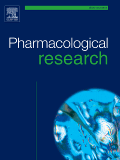
“Cannabis contains the psychoactive component delta⁸-tetrahydrocannabinol (delta⁸-THC), and the non-psychoactive components cannabidiol (CBD), cannabinol, and cannabigerol.
It is well-known that delta⁸-THC and other cannabinoid CB₁ receptor agonists are neuroprotective during global and focal ischemic injury.
Additionally, delta⁸-THC also mediates psychological effects through the activation of the CB₁ receptor in the central nervous system.
In addition to the CB₁ receptor agonists, cannabis also contains therapeutically active components which are CB₁ receptor independent.
Of the CB₁ receptor-independent cannabis, the most important is CBD.
In the past five years, an increasing number of publications have focused on the discovery of the anti-inflammatory, anti-oxidant, and neuroprotective effects of CBD.
In particular, CBD exerts positive pharmacological effects in ischemic stroke and other chronic diseases, including Parkinson’s disease, Alzheimer’s disease, and rheumatoid arthritis.
The cerebroprotective action of CBD is CB₁ receptor-independent, long-lasting, and has potent anti-oxidant activity. Importantly, CBD use does not lead to tolerance.
In this review, we will discuss the therapeutic possibility of CBD as a cerebroprotective agent, highlighting recent pharmacological advances, novel mechanisms, and therapeutic time window of CBD in ischemic stroke.”








